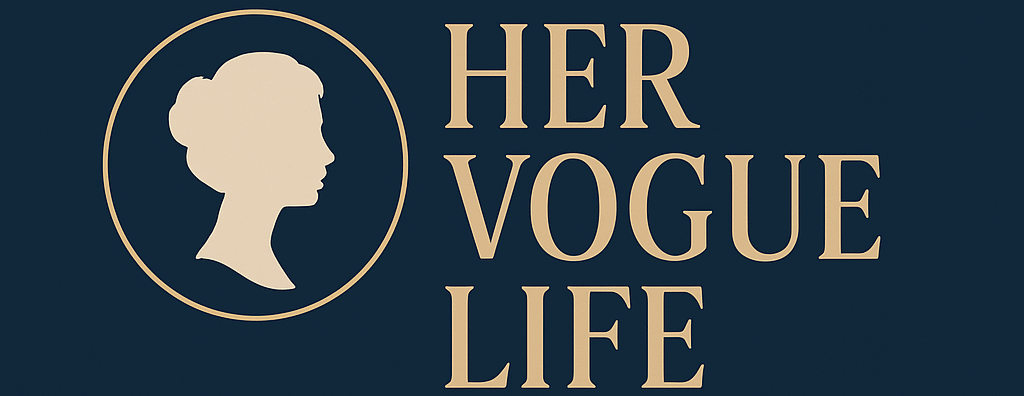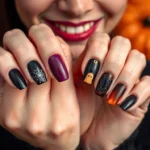We’ve all been there – staring at our reflection wondering why our skin seems to rebel against every product we try. If you’re struggling with acne-prone skin you’re not alone. Millions of people battle breakouts daily and the frustration of finding the right skincare routine can feel overwhelming.
Korean skincare has revolutionized how we approach acne treatment. Unlike harsh Western methods that strip and dry out skin K-beauty focuses on gentle hydration and barrier repair. This philosophy has proven incredibly effective for acne-prone skin types that need healing rather than punishment.
The Korean approach emphasizes patience consistency and understanding your skin’s unique needs. We’ll explore the most effective K-beauty ingredients like snail mucin tea tree oil and niacinamide that specifically target acne while maintaining healthy skin balance. You’ll discover why this gentler method often succeeds where traditional acne treatments fail.
Understanding Korean Skincare Philosophy for Acne-Prone Skin
Korean skincare transforms acne treatment by emphasizing gentle, nourishing methods that work with your skin rather than against it. This philosophy centers on building healthy skin barriers through consistent care and patience.
The Multi-Step Approach to Gentle Treatment
Korean skincare philosophy breaks down acne treatment into manageable layers that gradually heal and protect your skin. We start with gentle cleansing that removes impurities without stripping natural oils. Oil cleansers dissolve makeup and sunscreen while water-based cleansers eliminate remaining dirt and bacteria.
Toners prepare your skin for subsequent treatments by balancing pH levels and adding hydration. These aren’t the harsh astringents we might know from Western routines. Korean toners contain ingredients like green tea extract and hyaluronic acid that soothe inflammation while delivering moisture.
Serums target exact acne concerns with concentrated active ingredients. We layer lightweight formulas containing niacinamide, centella asiatica, or BHA acids that penetrate deep into pores. Each product serves a distinct purpose in the healing process.
Moisturizers seal in all previous treatments while maintaining your skin’s protective barrier. Even acne-prone skin needs hydration to prevent overproduction of sebum. Korean moisturizers use gel or emulsion textures that hydrate without clogging pores.
Prevention Over Correction Mindset
Korean skincare philosophy prioritizes stopping acne before it starts rather than treating existing breakouts aggressively. We focus on maintaining consistent skin health through daily protection and nourishment. Sunscreen becomes non-negotiable because UV damage weakens skin barriers and worsens acne scarring.
Regular gentle exfoliation removes dead skin cells that can clog pores and lead to breakouts. Korean approaches use mild chemical exfoliants like lactic acid or fruit enzymes instead of harsh physical scrubs. These treatments work gradually to reveal smoother skin without causing irritation.
Hydration plays a crucial role in acne prevention by maintaining optimal skin barrier function. Well-moisturized skin produces less excess oil and heals faster from minor breakouts. We choose lightweight hydrating ingredients like ceramides and peptides that strengthen skin without adding heaviness.
Stress reduction and lifestyle factors receive equal attention in Korean skincare philosophy. Sleep quality, diet, and emotional wellbeing directly impact skin health and acne formation. This holistic approach addresses root causes rather than just surface symptoms.
Essential Korean Skincare Ingredients That Combat Acne

We’ve explored the gentle philosophy behind Korean skincare, and now let’s examine the powerhouse ingredients that make this approach so effective for acne-prone skin.
Centella Asiatica for Inflammation Reduction
Centella asiatica transforms angry, inflamed acne into calmer, more manageable breakouts. This botanical extract, commonly known as cica in K-beauty products, delivers potent anti-inflammatory benefits that soothe irritated skin without causing additional dryness or sensitivity. Studies show that centella asiatica reduces redness and swelling associated with active acne while promoting faster healing of existing blemishes.
Korean skincare brands frequently combine centella with other gentle ingredients like hyaluronic acid or ceramides to create comprehensive acne-fighting formulas. Products containing this ingredient work particularly well for sensitive acne-prone skin that reacts poorly to harsh treatments. We recommend looking for serums or moisturizers with at least 10% centella asiatica extract for optimal anti-inflammatory results.
Snail Secretion Filtrate for Healing
Snail mucin accelerates the healing process of acne scars and damaged skin tissue. This unique ingredient contains natural growth factors and proteins that help regenerate skin cells more efficiently than traditional healing agents. Research indicates that snail secretion filtrate can reduce the appearance of post-acne marks by up to 40% when used consistently over 8-12 weeks.
Korean products featuring snail mucin often contain 92-96% snail secretion filtrate in their most potent formulations. These high-concentration treatments work by creating a protective barrier over healing acne while delivering moisture and nutrients directly to damaged areas. Products like essences, serums, and sheet masks harness this ingredient’s remarkable ability to repair skin without clogging pores.
Tea Tree Oil for Antibacterial Properties
Tea tree oil effectively controls acne-causing bacteria while maintaining skin’s natural balance. Korean formulations typically use tea tree oil at concentrations between 5-10%, which provides antibacterial benefits without the harsh irritation often associated with higher percentages. Clinical studies demonstrate that tea tree oil can reduce active acne lesions by 50-60% within 12 weeks of consistent use.
Korean skincare brands strategically blend tea tree oil with hydrating ingredients like centella asiatica or green tea extract to minimize potential dryness. Spot treatments, cleansers, and toners featuring this combination target problematic bacteria while supporting overall skin health. We find that tea tree-infused products work best when applied to clean skin before heavier moisturizers or treatments.
Niacinamide for Pore Control
Niacinamide minimizes pore appearance while reducing acne severity through multiple mechanisms. This form of vitamin B3 regulates sebum production, improves skin elasticity, and provides anti-inflammatory benefits that address both active breakouts and prevention. Research shows that 5% niacinamide can reduce pore size visibility by 35% and decrease acne lesion count by 60% over 8 weeks.
Korean formulations often feature niacinamide concentrations between 2-10% depending on the product type and intended use. Serums and essences with higher concentrations target exact concerns like enlarged pores or excess oil production, while moisturizers with lower percentages provide gentle daily maintenance. Products combining niacinamide with zinc or hyaluronic acid offer enhanced pore-refining benefits while maintaining optimal hydration levels.
Building Your Korean Skincare Routine for Acne-Prone Skin

Creating an effective Korean skincare routine for acne-prone skin requires strategic layering and consistent application. We’ll walk you through each essential step to help you achieve clearer, healthier skin.
Double Cleansing Method
Evening cleansing starts with an oil-based cleanser to dissolve makeup, sunscreen, and excess sebum that accumulates throughout the day. Oil cleansers work by attracting and lifting away oil-based impurities without stripping your skin’s natural moisture barrier. We recommend avoiding oil-based cleansers in the morning routine for acne-prone skin, as they’re specifically designed for evening use.
Water-based cleansing follows as the second step, using a gentle foam or gel cleanser to remove any remaining impurities. This dual approach ensures deep cleaning while maintaining essential hydration levels. Gentle foam cleansers work effectively to eliminate bacteria and debris that oil cleansers might miss.
Essence and Toner Application
Hydrating toners containing centella asiatica, heartleaf, or green tea help balance your skin’s pH levels after cleansing. These ingredients provide immediate soothing benefits while preparing your skin to better absorb subsequent products. Korean toners focus on hydration rather than astringent properties, making them ideal for sensitive, acne-prone skin.
Essence application delivers lightweight hydration and supports skin barrier repair through concentrated beneficial ingredients. Essences contain active compounds that reduce inflammation and promote healing without overwhelming your skin. We apply essence by gently patting it into the skin, allowing maximum absorption.
Targeted Treatment Steps
Serum selection should focus on ingredients like niacinamide, hyaluronic acid, panthenol, allantoin, and snail mucin for comprehensive acne treatment. Niacinamide helps control oil production and minimize pore appearance, while hyaluronic acid maintains optimal hydration levels. Snail mucin accelerates healing of acne scars and damaged tissue, though we recommend avoiding it if you’re allergic to shellfish or dust mites.
Concentrated ampoules deliver potent ingredients directly to problem areas without causing irritation. These products target exact concerns like redness, scarring, and active breakouts through carefully formulated concentrations. Application should be gentle and focused on affected areas rather than the entire face.
Moisturizing Without Clogging Pores
Lightweight moisturizers labeled as “oil-free” or “for sensitive, acne-prone skin” provide essential hydration without blocking pores. Non-comedogenic formulas ensure your skin stays properly moisturized while preventing new breakouts from forming. We recommend choosing products specifically designed for acne-prone skin types to avoid potential irritation.
Ingredient avoidance includes sodium lauryl sulfate (SLS) and heavy oils that can trigger breakouts in sensitive skin. These ingredients often cause pore congestion and increase acne severity over time. Reading product labels carefully helps you identify and avoid problematic ingredients that might sabotage your skincare progress.
Top Korean Skincare Products for Acne-Prone Skin

Now that we’ve explored the foundational principles and key ingredients, let’s jump into the exact products that’ll transform your acne-prone skin. We’ve carefully selected these K-beauty essentials based on their proven effectiveness and gentle approach to treating breakouts.
Best Korean Cleansers for Acne
Purito From Green Cleansing Oil stands out as our top oil-based cleanser for acne-prone skin. This lightweight formula removes makeup and dissolves sebum without stinging your eyes, making it perfect for the first step of double cleansing. The oil emulsifies beautifully with water, ensuring all impurities wash away completely.
Beauty of Joseon Radiance Balm offers another excellent cleansing option with its ginseng root and rice oil formula. This balm effectively dissolves oil-based impurities while nourishing your skin barrier, preventing the tight feeling that often follows harsh cleansers.
innisfree’s troubled skin collection provides specialized gel and foam cleansers designed specifically for acne management. These cleansers clear excess oil and impurities without over-drying, maintaining the delicate balance your skin needs to heal.
Most Effective Korean Serums and Treatments
ANUA 10 + TXA 4 Serum combines niacinamide and tranexamic acid to fade dark spots left behind by acne. The formula includes hyaluronic acid and ceramides for barrier support, addressing both active breakouts and post-acne marks simultaneously.
Cosrx spot treatments target individual blemishes with concentrated active ingredients that reduce inflammation and accelerate healing. These treatments work overnight to minimize the appearance of active breakouts without irritating surrounding skin.
innisfree’s targeted treatments offer multiple answers for different acne concerns, from inflamed cysts to persistent blackheads. Each treatment addresses exact acne types with carefully calibrated ingredient concentrations.
Recommended Korean Moisturizers for Oily Skin
NeNe Ponic Acid B5 Active Skin Cream regulates oil production through pantothenic acid (Vitamin B5) while providing essential hydration. The formula includes sepia extract and niacinamide in a lightweight, non-sticky texture that won’t clog pores.
Barrier-supporting creams from Beauty of Joseon feature ceramides and panthenol to strengthen your skin’s natural defense system. These moisturizers prevent moisture loss while controlling sebum production, creating the ideal environment for clear skin.
Oil-free formulations ensure your skin receives necessary hydration without adding excess oil to already congested pores. Look for products with sebum-control ingredients that maintain moisture balance throughout the day.
Common Mistakes to Avoid When Using Korean Skincare for Acne

While Korean skincare offers gentle answers for acne prone skin, certain mistakes can undermine your progress. We’ve identified the most critical errors that can prevent you from achieving the clear skin you’re seeking.
Over-Exfoliating and Skin Barrier Damage
Over-exfoliation damages your skin’s natural barrier and triggers more breakouts than it prevents. We see this mistake constantly when people use chemical exfoliants or physical scrubs too frequently. Your skin’s protective barrier becomes compromised when you strip away natural oils through harsh exfoliation methods.
Korean skincare emphasizes gentle exfoliation using mild acids like salicylic or lactic acid in moderation. Chemical exfoliants should be used only 2-3 times per week maximum for acne prone skin. Physical scrubs can create micro-tears that lead to inflammation and increased oil production.
Signs you’re over-exfoliating include persistent redness, increased sensitivity, and paradoxically more breakouts. Your skin may feel tight and produce excess oil to compensate for the stripped barrier. Recovery requires stopping all exfoliation for 1-2 weeks while focusing on hydrating ingredients like hyaluronic acid and centella asiatica.
Introducing Too Many Products at Once
Adding multiple new products simultaneously makes it impossible to identify which ingredients help or harm your skin. We recommend introducing one new product at a time to monitor your skin’s exact reactions. This systematic approach prevents overwhelming your skin and allows you to build an effective routine gradually.
Your skin needs 2-4 weeks to adjust to new active ingredients like niacinamide or snail mucin. Introducing everything at once can cause irritation that mimics acne flare-ups. Start with the most essential products first: cleanser, moisturizer, then add treatments like serums.
Wait at least one week between adding new products to your routine. Document any changes in your skin’s appearance, texture, or sensitivity during this period. This methodical approach helps you identify which Korean skincare ingredients work best for your exact acne concerns.
Skipping Patch Tests
Patch testing prevents widespread irritation and breakouts that can set back your skincare progress for weeks. We strongly advise testing new products on a small area of skin before applying them to your entire face. This simple step reveals potential allergies or adverse reactions to ingredients like panthenol or green tea extract.
Apply a small amount of the new product behind your ear or on your inner wrist. Monitor the test area for 24-48 hours for any signs of redness, itching, or irritation. Even gentle Korean skincare ingredients can cause reactions in sensitive individuals.
Skip this step and you risk experiencing contact dermatitis or allergic reactions across your entire face. These reactions often look like acne flare-ups but require different treatment approaches. Patch testing takes minimal time but saves you from potentially damaging setbacks in your acne treatment journey.
Adapting Korean Skincare Routines to Different Acne Types

We understand that not all acne is created equal, which is why Korean skincare routines can be customized to target exact acne types. Different acne patterns require distinct approaches for optimal results.
Hormonal Acne Management
Double cleansing becomes essential for managing hormonal breakouts that typically appear along the jawline and chin. We recommend starting with an oil-based cleanser to dissolve sebum and impurities, followed by a gentle water-based cleanser to remove any remaining residue without stripping natural oils.
Balancing products work wonders for hormonal acne since they focus on regulating oil production while protecting sensitive skin. Korean skincare formulations excel at maintaining this delicate balance, preventing the overproduction of sebum that often triggers hormonal breakouts.
Consistency matters most when dealing with hormonal fluctuations, as these breakouts follow monthly cycles. We suggest maintaining the same routine throughout your cycle to help stabilize skin reactions.
Cystic Acne Treatment Approach
Gentle exfoliation prevents the deep inflammation characteristic of cystic acne by removing dead skin cells before they can clog pores. We recommend using Korean exfoliators containing alpha-hydroxy acids (AHAs) or beta-hydroxy acids (BHAs) only two to three times per week to avoid irritation.
Targeted treatments deliver concentrated anti-acne ingredients directly to problem areas through serums or ampoules. Formulations with salicylic acid or tea tree oil work effectively against the bacteria that cause cystic acne while reducing inflammation.
Patience becomes crucial since cystic acne takes longer to heal than surface breakouts. We advise against aggressive treatments that can worsen inflammation and potentially cause scarring.
Comedonal Acne Prevention
Preventive toners containing centella asiatica or chamomile help hydrate and calm the skin while preventing comedone formation. These ingredients reduce the likelihood of blackheads and whiteheads developing in the first place.
Hydrating products maintain proper moisture levels through ingredients like hyaluronic acid or aloe vera, preventing the skin from overproducing oil. When skin stays adequately hydrated, it’s less likely to create the excess sebum that leads to comedonal acne.
Regular maintenance prevents comedones from forming by keeping pores clear and skin balanced. We recommend focusing on prevention rather than treatment, as comedonal acne responds better to consistent preventive care than reactive treatments.
Budget-Friendly Korean Skincare Options for Acne-Prone Skin

Korean skincare doesn’t have to expensive to deliver impressive results for acne-prone skin. We’ve discovered many affordable options that prove effective acne treatment can be accessible to everyone.
Affordable Korean Drugstore Brands
COSRX stands out as our top recommendation for budget-conscious skincare enthusiasts seeking no-frills acne answers at remarkably low prices. Their Low pH Good Morning Gel Cleanser gently removes impurities without stripping your skin’s natural barrier. Advanced formulations like the Ultimate Moisturizing Rice Overnight Spa Mask provide intensive hydration while you sleep. Spot treatments from COSRX target individual blemishes with tea tree oil and centella asiatica.
Etude House offers an extensive range of gentle products perfect for sensitive, acne-prone skin types. Their SoonJung pH 6.5 Cleanser maintains your skin’s optimal pH balance while cleansing effectively. Moistfull Collagen Cream delivers essential hydration without clogging pores. Multi-use sunscreens from this brand protect against UV damage while remaining lightweight and non-comedogenic.
The Saem provides exceptional value through their targeted acne treatments and soothing toners. Budget-friendly spot treatments contain concentrated tea tree oil for direct pimple treatment. Calming essences feature centella asiatica to reduce inflammation and support skin repair.
Benton creates affordable essences and toners specifically formulated with anti-inflammatory ingredients. Centella asiatica extracts in their products calm irritated skin naturally. Tea tree extract formulations help control acne-causing bacteria without over-drying.
Illiyoon specializes in barrier-repairing moisturizers that won’t strain your budget. Their Ceramide Ato Cream restores damaged skin barriers while maintaining optimal hydration levels. Gentle formulations suit even the most sensitive acne-prone skin types.
Multi-Purpose Products That Save Money
Moisturizing Sleeping Packs eliminate the need for multiple nighttime products by combining hydration and treatment benefits. COSRX Ultimate Moisturizing Rice Overnight Spa Mask hydrates deeply while soothing inflammation throughout the night. Rice extracts provide gentle exfoliation and nourishment in one step.
All-in-One Essences streamline your routine by delivering multiple skin benefits simultaneously. COSRX Advanced Snail 96 Mucin Power Essence offers hydration, soothing properties, and mild anti-acne benefits in a single product. Snail mucin accelerates healing of acne scars while preventing new breakouts.
Oil-Free Sunscreens serve dual purposes by protecting against UV damage while treating acne-prone skin gently. Etude House formulations provide broad-spectrum protection without irritating sensitive areas. Missha sunscreens offer lightweight coverage that won’t clog pores or trigger breakouts.
Hydrating Toners replace multiple toning and essence steps with comprehensive skin preparation benefits. Products containing centella asiatica calm inflammation while balancing your skin’s pH levels. Tea tree extract toners control excess oil production while maintaining essential moisture.
Advanced Korean Skincare Techniques for Stubborn Acne

When basic routines aren’t delivering the results you need, these advanced K-beauty techniques can help break through stubborn acne barriers. We’ll explore targeted treatments that elevate your skincare game beyond the standard cleanse-tone-moisturize approach.
Sheet Mask Treatments
Sheet masks deliver concentrated doses of acne-fighting ingredients directly to your skin through serum-soaked fabric. These treatments feature powerhouse ingredients like tea tree oil, centella asiatica, and green tea extract that work together to calm irritated skin and reduce redness.
Weekly sheet mask sessions support your skin barrier function while providing intense hydration that won’t clog pores. The concentrated serums penetrate deeper than regular topical applications, making them particularly effective for stubborn breakouts that resist other treatments.
Timing matters when using sheet masks for acne-prone skin. Apply them after cleansing and toning to maximize absorption of the active ingredients. The mask creates a sealed environment that forces beneficial compounds into your skin while delivering antioxidants that promote healing.
Choose masks specifically formulated for acne concerns rather than general hydrating varieties. Look for ingredients that target multiple aspects of breakouts: antibacterial agents to fight acne-causing bacteria, anti-inflammatory compounds to reduce swelling, and healing accelerators to prevent scarring.
Spot Treatment Methods
Hydrocolloid patches revolutionize how we handle active breakouts by creating protective barriers that extract pimple contents while preventing infection. These medical-grade patches work by drawing out impurities through osmotic pressure, making them incredibly effective for whiteheads and surface-level blemishes.
Targeted serums and gels containing salicylic acid, tea tree oil, or centella asiatica offer precise treatment for individual breakouts. Apply these concentrated formulas directly to affected areas rather than spreading them across your entire face, which maximizes their effectiveness while minimizing potential irritation.
Korean spot treatment philosophy focuses on accelerating healing rather than aggressive drying. Products formulated with this approach reduce swelling and prevent scarring while maintaining the skin’s natural moisture balance around treated areas.
Consistency transforms spot treatments from emergency measures into proactive acne management tools. Regular application at the first sign of developing breakouts prevents minor issues from becoming major problems, making your overall skincare routine more effective.
Professional-Grade At-Home Options
Professional-grade exfoliating toners bring dermatologist-level results to your bathroom counter through carefully calibrated acid concentrations. These formulations penetrate deeper than standard toners while remaining gentle enough for regular use, offering the perfect balance between effectiveness and skin safety.
Ampoules containing high concentrations of active ingredients like niacinamide, retinol derivatives, or peptides deliver targeted treatment without the cost of professional facials. These potent formulas are designed to mimic clinical treatments, providing enhanced penetration and faster results for persistent acne concerns.
LED light therapy masks represent the cutting edge of at-home acne treatment technology. These devices use exact wavelengths to target acne-causing bacteria while promoting cellular regeneration, offering a non-invasive alternative to harsh chemical treatments.
Morning sunscreen application becomes even more critical when using professional-grade products at home. These powerful formulations can increase your skin’s photosensitivity, making UV protection essential for preventing acne scars and hyperpigmentation that could undo your progress.
Tracking Progress and Adjusting Your Korean Skincare Routine

Success with Korean skincare for acne requires patience and careful monitoring of our skin’s response. We need to establish realistic expectations while knowing when adjustments become necessary.
Setting Realistic Timeline Expectations
Patience forms the foundation of effective Korean skincare for acne prone skin, as noticeable improvements typically take several weeks to months. Initial changes like reduced irritation and improved hydration often appear within the first 2-3 weeks of consistent use.
Active breakouts usually begin clearing around the 4-6 week mark when we maintain our routine consistently. Post-inflammatory hyperpigmentation and acne scars require longer treatment periods, often showing improvement after 8-12 weeks of dedicated care.
Hormonal acne responds more slowly than other types, potentially requiring 3-4 months before we see important clearing. Cystic acne may initially appear worse during the first month as deep-seated impurities work their way to the surface.
Seasonal changes can temporarily affect our progress, particularly during transitions between dry and humid weather. We should expect minor fluctuations in our skin’s appearance during these periods rather than viewing them as routine failures.
When to Modify Your Routine
Persistent breakouts after 8 weeks signal the need for routine adjustments, especially if we’ve maintained consistency throughout this period. Check for harsh ingredients or over-exfoliation patterns that might be disrupting our skin barrier function.
Increased sensitivity or irritation indicates we’re using products too frequently or combining incompatible ingredients. Scale back to basic cleansing and moisturizing until our skin barrier recovers completely.
New acne patterns emerging suggest our current products may no longer suit our skin’s changing needs. Hormonal shifts, stress levels, or environmental changes can alter how our skin responds to exact ingredients.
Lack of hydration even though moisturizing means we need to incorporate more hydrating layers like essences or switch to barrier-repairing formulations. Avoid products containing sodium lauryl sulfate (SLS) which can compromise our skin’s natural protective barrier.
Seasonal skin changes require temporary modifications to product weights and frequencies rather than complete routine overhauls. Summer months may call for lighter textures while winter demands more intensive moisture retention strategies.
Professional consultation becomes necessary when we experience persistent cystic acne, severe scarring, or reactions that worsen even though gentle product adjustments. Dermatologists can provide targeted treatments that complement our Korean skincare foundation.
Conclusion
Korean skincare offers a groundbreaking approach to managing acne-prone skin through gentle yet effective methods. We’ve explored how this philosophy prioritizes barrier repair and hydration over harsh treatments that can worsen breakouts.
The journey to clearer skin requires patience and consistency. By incorporating proven K-beauty ingredients like centella asiatica and niacinamide into a well-structured routine you’ll address both active breakouts and long-term skin health.
Remember that every person’s skin is unique. What works for one person may need adjustment for another. Don’t hesitate to modify your routine based on your skin’s response and consider professional guidance when needed.
The Korean skincare approach proves that treating acne doesn’t have to involve aggressive methods. With the right products gentle techniques and realistic expectations you can achieve the healthy clear skin you’ve been seeking.
Frequently Asked Questions
What makes Korean skincare different from Western acne treatments?
Korean skincare focuses on gentle hydration and barrier repair rather than harsh, drying treatments. This approach emphasizes nourishing the skin to build healthy barriers and prevent acne formation, contrasting with aggressive Western methods that often strip the skin and cause irritation.
How long does it take to see results with Korean skincare for acne?
Initial improvements typically appear within 2-3 weeks, with active breakouts clearing around 4-6 weeks. However, significant and lasting results usually take several months of consistent use. Patience and consistency are key to success with K-beauty routines.
What are the most effective Korean skincare ingredients for acne?
The top K-beauty ingredients for acne include Centella Asiatica (anti-inflammatory), snail secretion filtrate (healing and scar reduction), tea tree oil (antibacterial), and niacinamide (pore minimizing and oil control). These ingredients work gently while effectively targeting acne concerns.
What is double cleansing and why is it important for acne-prone skin?
Double cleansing involves using an oil-based cleanser first to remove makeup and impurities, followed by a water-based cleanser. This method thoroughly cleans pores without over-stripping the skin, making it essential for preventing clogged pores and breakouts.
Can Korean skincare work for different types of acne?
Yes, Korean skincare can be adapted for various acne types. Hormonal acne benefits from balancing products, cystic acne responds to gentle exfoliation and targeted treatments, while comedonal acne improves with preventive toners and hydrating products.
What are common mistakes to avoid with Korean skincare for acne?
Avoid over-exfoliating, which can damage the skin barrier and worsen breakouts. Don’t introduce multiple new products at once – gradually add one product at a time. Always patch test new products and avoid skipping moisturizer, even with oily skin.
Are there budget-friendly Korean skincare options for acne?
Absolutely! Affordable brands like COSRX, Etude House, The Saem, and Benton offer effective acne treatments. Multi-purpose products like overnight masks and all-in-one essences can also help save money while providing multiple benefits.
When should I modify my Korean skincare routine?
Consider adjusting your routine if breakouts persist after 8 weeks, you experience increased sensitivity, or new acne patterns emerge. Always consult a dermatologist for severe acne or if your skin condition worsens despite gentle treatment adjustments.















